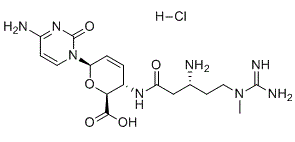Third, the study recorded only 128 endoscopic procedures and may underestimate the importance of antibiotic prophylaxis. Therefore, a large randomized trial is required to address the efficacy of antibiotic prophylaxis in the prevention of postendoscopic PD peritonitis. Nevertheless, because endoscopy-associated PD peritonitis only occurred in patients undergoing colonoscopy or hysteroscopy without antibiotic use, and none of the patients receiving prophylactic antibiotics developed postendoscopic PD peritonitis, this study merits the use of antibiotic prophylaxis in patients undergoing colonoscopy and hysteroscopy. In conclusion, this study demonstrated a low incidence of EGDassociated PD peritonitis. Antibiotic prophylaxis significantly reduced endoscopy-associated PD peritonitis in the non-EGD group. Endoscopically assisted invasive  procedures, such as biopsy, polypectomy, IUD implantation/removal, and dilatation and curettage, pose a high risk for peritonitis. Prophylactic antibiotics significantly reduce the rate of PD peritonitis after these invasive therapies. Dynamic changes in chromatin architecture are necessary to adapt the transcriptional profile to specific changes of the physiological conditions. The SWI/SNF complex of chromatinremodeling enzymes uses the energy of ATP-hydrolysis to alter histone-DNA interactions within the nucleosome. The activity of the SWI/SNF chromatin remodeling complex leads to the mobilization of histone octamers along the DNA and can thereby promote transcriptional activation or repression of specific genes by facilitating or restricting access of transcription factors and the basal transcriptional machinery to the DNA. Mammalian SWI/SNF complexes are composed of either BRM or BRG1 and 9�C12 additional subunits, which are referred as BRM- or BRG1-associated factors called BAFs. Individual SWI/SNF complexes contain either BRM or BRG1, but not both, such that BRM/BAF complexes are structural distinct from BRG1/BAF complexes. Beside their ATPase subunit, the chromatin remodeling complexes differ in the composition of associated cofactors, which stimulate and modulate qualitatively the remodeling activity within the complex. In addition, the associating subunits are believed to mediate targeting of the ATPase subunit to integrate nucleosome remodeling into a physiological context. Mammalian SWI/SNF complexes are involved in the dynamic transcriptional regulation of a large array of genes including cell cycle regulators, signaling proteins, genes regulating the architecture of the cell and adhesion to the extra cellular matrix. In addition, SWI/SNF complexes are critical mediators of RB and p53 to induce cell cycle arrest and are required for BRCA-mediated DNA repair, pointing toward a fundamental function of these proteins as tumor suppressors. BRM knockout mice as well as BRG1 heterozygous mice are more prone for cancer development.
procedures, such as biopsy, polypectomy, IUD implantation/removal, and dilatation and curettage, pose a high risk for peritonitis. Prophylactic antibiotics significantly reduce the rate of PD peritonitis after these invasive therapies. Dynamic changes in chromatin architecture are necessary to adapt the transcriptional profile to specific changes of the physiological conditions. The SWI/SNF complex of chromatinremodeling enzymes uses the energy of ATP-hydrolysis to alter histone-DNA interactions within the nucleosome. The activity of the SWI/SNF chromatin remodeling complex leads to the mobilization of histone octamers along the DNA and can thereby promote transcriptional activation or repression of specific genes by facilitating or restricting access of transcription factors and the basal transcriptional machinery to the DNA. Mammalian SWI/SNF complexes are composed of either BRM or BRG1 and 9�C12 additional subunits, which are referred as BRM- or BRG1-associated factors called BAFs. Individual SWI/SNF complexes contain either BRM or BRG1, but not both, such that BRM/BAF complexes are structural distinct from BRG1/BAF complexes. Beside their ATPase subunit, the chromatin remodeling complexes differ in the composition of associated cofactors, which stimulate and modulate qualitatively the remodeling activity within the complex. In addition, the associating subunits are believed to mediate targeting of the ATPase subunit to integrate nucleosome remodeling into a physiological context. Mammalian SWI/SNF complexes are involved in the dynamic transcriptional regulation of a large array of genes including cell cycle regulators, signaling proteins, genes regulating the architecture of the cell and adhesion to the extra cellular matrix. In addition, SWI/SNF complexes are critical mediators of RB and p53 to induce cell cycle arrest and are required for BRCA-mediated DNA repair, pointing toward a fundamental function of these proteins as tumor suppressors. BRM knockout mice as well as BRG1 heterozygous mice are more prone for cancer development.